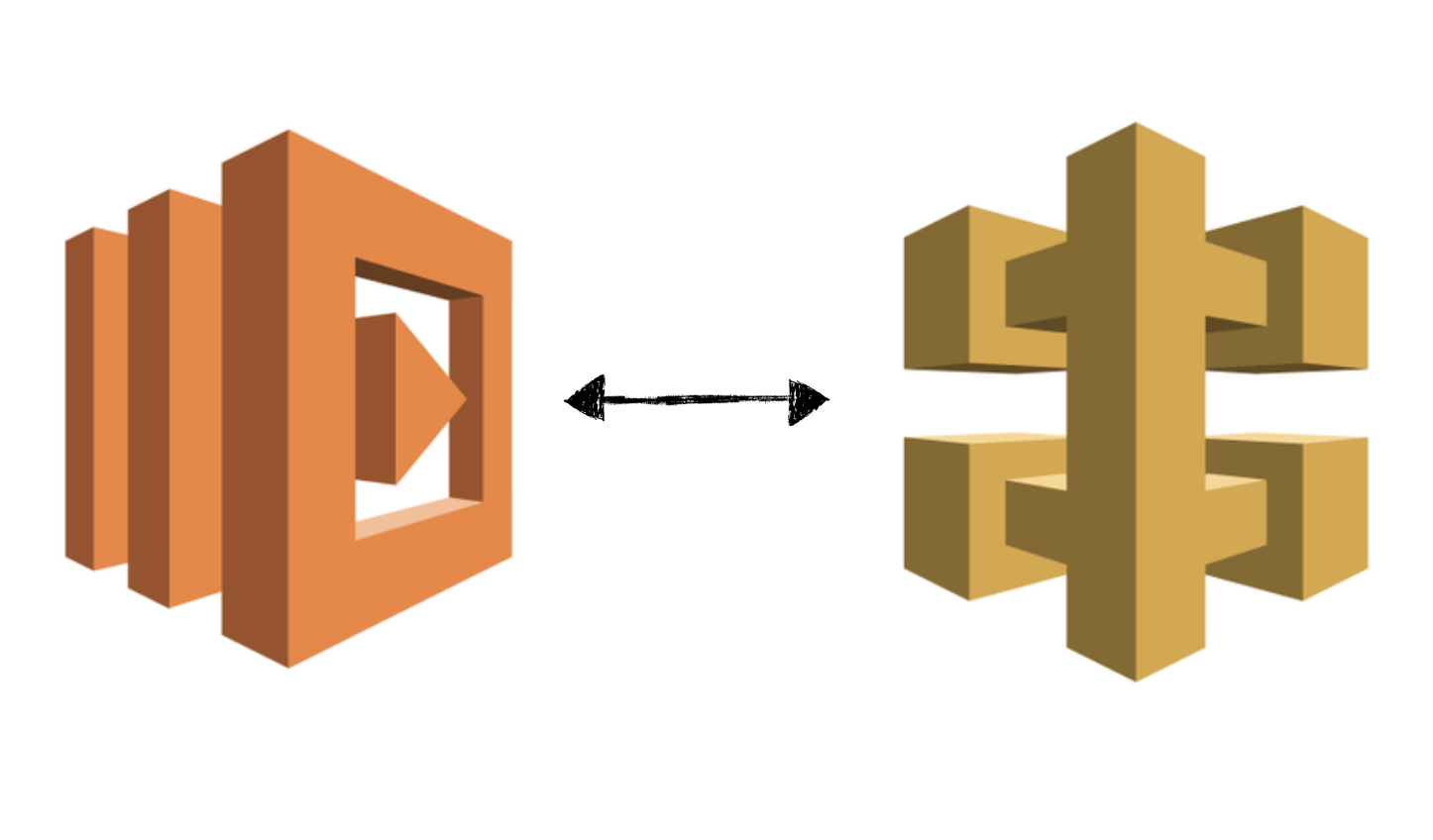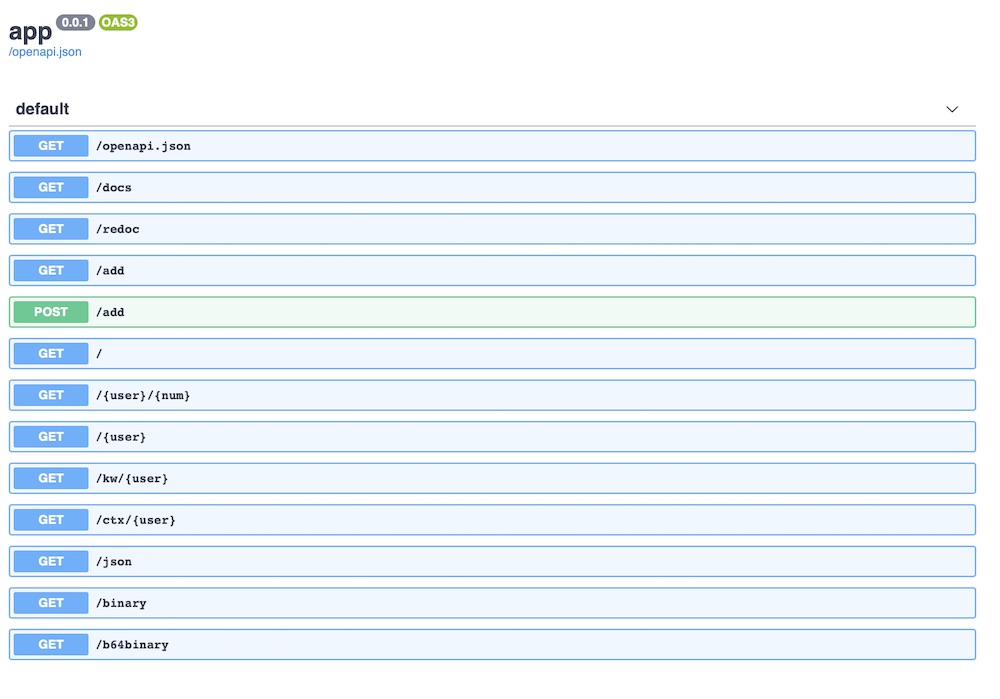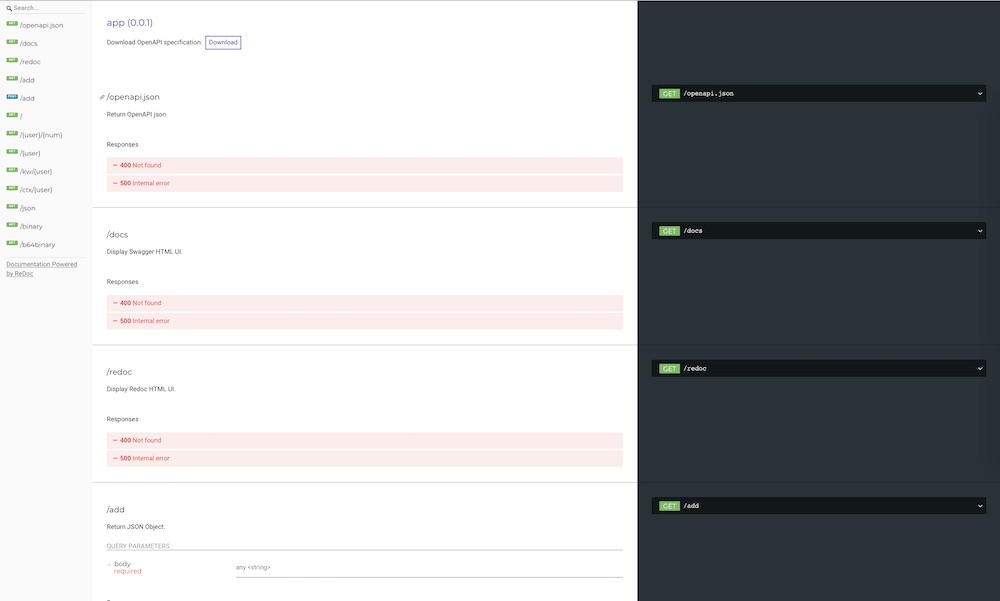Simple AWS Lambda proxy to handle API Gateway request
Project description
lambda-proxy
A zero-requirement proxy linking AWS API Gateway {proxy+} requests and AWS Lambda.

Install
$ pip install -U pip
$ pip install lambda-proxy
Or install from source:
$ git clone https://github.com/vincentsarag/lambda-proxy.git
$ cd lambda-proxy
$ pip install -U pip
$ pip install -e .
Usage
With GET request
from lambda_proxy.proxy import API
APP = API(name="app")
@APP.route('/test/tests/<id>', methods=['GET'], cors=True)
def print_id(id):
return ('OK', 'plain/text', id)
With POST request
from lambda_proxy.proxy import API
APP = API(name="app")
@APP.route('/test/tests/<id>', methods=['POST'], cors=True)
def print_id(id, body):
return ('OK', 'plain/text', id)
Routes
Route schema is simmilar to the one used in Flask
Variable parts in the route can be specified with angular brackets
/user/<username>. By default a variable part in the URL accepts any string without a slash however a different converter can be specified as well by using<converter:name>.
Converters:
int: integerstring: stringfloat: float numberuuid: UUID
example:
/app/<user>/<id>(userandidare variables)/app/<string:value>/<float:num>(valuewill be a string, whilenumwill be a float)
Route Options
- path: the URL rule as string
- methods: list of HTTP methods allowed, default: ["GET"]
- cors: allow CORS, default:
False - token: set
access_tokenvalidation - payload_compression_method: Enable and select an output body compression
- binary_b64encode: base64 encode the output body (API Gateway)
- ttl: Cache Control setting (Time to Live)
- description: route description (for documentation)
- tag: list of tags (for documentation)
Cache Control
Add a Cache Control header with a Time to Live (TTL) in seconds.
from lambda_proxy.proxy import API
APP = API(app_name="app")
@APP.route('/test/tests/<id>', methods=['GET'], cors=True, ttl=3600)
def print_id(id):
return ('OK', 'plain/text', id)
Binary responses
When working with binary on API-Gateway we must return a base64 encoded string
from lambda_proxy.proxy import API
APP = API(name="app")
@APP.route('/test/tests/<filename>.jpg', methods=['GET'], cors=True, binary_b64encode=True)
def print_id(filename):
with open(f"{filename}.jpg", "rb") as f:
return ('OK', 'image/jpeg', f.read())
Enable compression (happens only if "Accept-Encoding" if found in headers)
from lambda_proxy.proxy import API
APP = API(name="app")
@APP.route('/test/tests/<filename>.jpg', methods=['GET'], cors=True, binary_b64encode=True, payload_compression_method="gzip")
def print_id(filename):
with open(f"{filename}.jpg", "rb") as f:
return ('OK', 'image/jpeg', f.read())
Simple Auth token
Lambda-proxy provide a simple token validation system.
- a "TOKEN" variable must be set in the environment
- each request must provide a "access_token" params (e.g curl http://myurl/test/tests/myid?access_token=blabla)
from lambda_proxy.proxy import API
APP = API(name="app")
@APP.route('/test/tests/<id>', methods=['GET'], cors=True, token=True)
def print_id(id):
return ('OK', 'plain/text', id)
URL schema and request parameters
QueryString parameters are passed as function's options.
from lambda_proxy.proxy import API
APP = API(name="app")
@APP.route('/<id>', methods=['GET'], cors=True)
def print_id(id, name=None):
return ('OK', 'plain/text', f"{id}{name}")
requests:
$ curl /000001
0001
$ curl /000001?name=vincent
0001vincent
Multiple Routes
from lambda_proxy.proxy import API
APP = API(name="app")
@APP.route('/<id>', methods=['GET'], cors=True)
@APP.route('/<id>/<int:number>', methods=['GET'], cors=True)
def print_id(id, number=None, name=None):
return ('OK', 'plain/text', f"{id}-{name}-{number}")
requests:
$ curl /000001
0001--
$ curl /000001?name=vincent
0001-vincent-
$ curl /000001/1?name=vincent
0001-vincent-1
Advanced features
Context and Event passing
Pass event and context to the handler function.
from lambda_proxy.proxy import API
APP = API(name="app")
@APP.route("/<id>", methods=["GET"], cors=True)
@APP.pass_event
@APP.pass_context
def print_id(ctx, evt, id):
print(ctx)
print(evt)
return ('OK', 'plain/text', f"{id}")
Automatic OpenAPI documentation
By default the APP (lambda_proxy.proxy.API) is provided with three (3) routes:
-
/openapi.json: print OpenAPI JSON definition -
/docs: swagger html UI -
/redoc: Redoc html UI
Function annotations
To be able to render full and precise API documentation, lambda_proxy uses python type hint and annotations link.
from lambda_proxy.proxy import API
APP = API(name="app")
@APP.route('/test/<int:id>', methods=['GET'], cors=True)
def print_id(id: int, num: float = 0.2) -> Tuple(str, str, str):
return ('OK', 'plain/text', id)
In the example above, our route /test/<int:id> define an input id to be a INT, while we also add this hint to the function print_id we also specify the type (and default) of the num option.
Examples
- https://github.com/vincentsarago/lambda-proxy/tree/master/example
- https://github.com/RemotePixel/remotepixel-tiler
Contribution & Devellopement
Issues and pull requests are more than welcome.
Dev install & Pull-Request
$ git clone https://github.com/vincentsarago/lambda-proxy.git
$ cd lambda-proxy
$ pip install -e .[dev]
This repo is set to use pre-commit to run flake8, pydocstring and black ("uncompromising Python code formatter") when committing new code.
$ pre-commit install
$ git add .
$ git commit -m'my change'
black.........................Passed
Flake8........................Passed
Verifying PEP257 Compliance...Passed
$ git push origin
License
See LICENSE.txt.
Authors
See AUTHORS.txt.
Changes
See CHANGES.txt.
Project details
Release history Release notifications | RSS feed
Download files
Download the file for your platform. If you're not sure which to choose, learn more about installing packages.
















